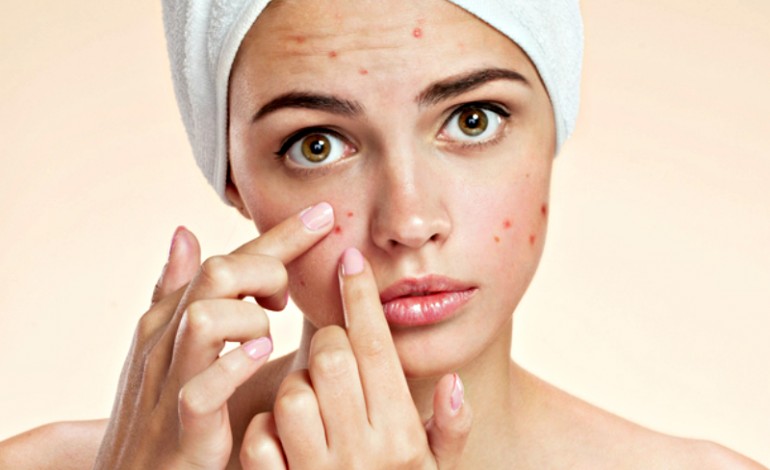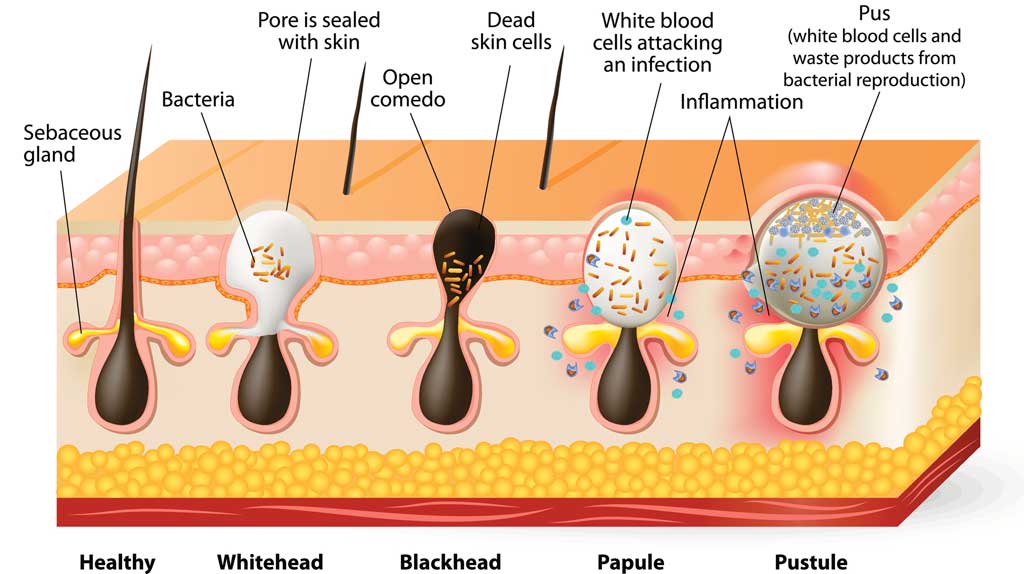Acne vulgaris, commonly referred to as acne, is a skin condition that affects millions of people worldwide. It is particularly prevalent among teenagers but can occur at any age. This article aims to provide a comprehensive understanding of the causes, types, and treatments available for acne. Whether you are someone dealing with this condition or simply seeking knowledge, this guide will help you navigate through the complexities of acne.

What is Acne?
Acne is a chronic inflammatory condition of the skin that occurs when hair follicles become clogged with oil and dead skin cells. This blockage leads to the formation of various types of pimples, including whiteheads, blackheads, and more severe forms like cysts and nodules. Acne most commonly appears on the face, neck, chest, back, and shoulders, which are areas with a high concentration of oil glands.
Why Does Acne Occur?
The development of acne is influenced by a combination of factors. Understanding these factors is crucial for effective management and treatment. Below are the primary reasons why acne occurs:
- Hormonal Changes: Fluctuations in hormone levels, especially during puberty, menstruation, pregnancy, or due to conditions like polycystic ovary syndrome, can increase oil production in the skin. This excess oil can clog pores and lead to acne.
- Excess Oil Production: The sebaceous glands produce an oily substance called sebum, which helps keep the skin moisturized. However, excessive sebum production can mix with dead skin cells and cause blockages.
- Bacteria: A type of bacteria known as Propionibacterium acnes thrives in clogged pores. When these bacteria multiply, they trigger inflammation and lead to the formation of pimples.
- Clogged Pores: Dead skin cells and oil can accumulate on the surface of the skin and inside hair follicles, leading to blockages that result in acne lesions.
- Diet and Lifestyle: While the relationship between diet and acne is still being studied, certain foods like dairy products and high-glycemic-index foods may exacerbate acne in some individuals. Stress and inadequate skincare routines can also contribute to breakouts.
Types of Acne
Acne manifests in various forms, each with distinct characteristics. Recognizing the type of acne you have is essential for choosing the right treatment approach. Here are the most common types of acne:
Non-Inflammatory Acne
This category includes milder forms of acne that do not involve significant swelling or redness.
- Whiteheads: These occur when pores are completely blocked, trapping oil, bacteria, and dead skin cells beneath the surface. Whiteheads appear as small, flesh-colored bumps.
- Blackheads: Blackheads form when pores are partially blocked, allowing some of the trapped material to reach the surface. The dark color is not dirt but rather oxidized melanin, a pigment found in the skin.
Inflammatory Acne
Inflammatory acne is more severe and often painful. It involves redness, swelling, and deeper involvement of the skin layers.
- Papules: These are small, red, inflamed bumps that do not contain pus. They develop when the walls surrounding the pores break down due to inflammation.
- Pustules: Similar to papules, pustules are filled with pus and appear as red bumps with a yellow or white center.
- Nodules: Nodules are large, solid, and painful lumps that form deep beneath the skin’s surface. They result from severe inflammation and can cause scarring if not treated properly.
- Cysts: Cystic acne is the most severe form of acne and consists of large, pus-filled lesions that are deeply embedded in the skin. Cysts are often painful and can lead to permanent scarring.
Treatment Options for Acne
Treating acne requires a personalized approach based on the type and severity of the condition. Below are some of the most effective treatment options available:
Over-the-Counter Treatments
Mild cases of acne can often be managed with over-the-counter products. These treatments typically contain active ingredients that target the underlying causes of acne.
- Benzoyl Peroxide: This ingredient kills acne-causing bacteria and reduces inflammation. It is available in various strengths and formulations, such as gels, creams, and washes.
- Salicylic Acid: Salicylic acid exfoliates the skin and unclogs pores by dissolving dead skin cells. It is commonly found in cleansers, toners, and spot treatments.
- Sulfur: Sulfur helps remove excess oil and dead skin cells while reducing inflammation. It is often used in masks and spot treatments.
Prescription Medications
For moderate to severe acne, prescription medications may be necessary. These treatments are usually prescribed by a dermatologist and may include:
- Topical Retinoids: Derived from vitamin A, topical retinoids promote cell turnover and prevent clogged pores. They are effective for treating both non-inflammatory and inflammatory acne.
- Antibiotics: Topical or oral antibiotics reduce bacteria and inflammation. They are often used in combination with other treatments for optimal results.
- Hormonal Treatments: Birth control pills and anti-androgen medications can help regulate hormone levels and reduce acne in women.
- Isotretinoin: This powerful oral medication is reserved for severe, treatment-resistant acne. It works by shrinking oil glands and reducing oil production but requires close monitoring due to potential side effects.
Professional Procedures
In addition to medications, several professional procedures can help improve acne-prone skin. These treatments are typically performed by dermatologists or licensed skincare professionals.
- Chemical Peels: Chemical peels use acids to exfoliate the top layer of the skin, removing dead cells and unclogging pores. They can improve the appearance of mild acne and post-acne marks.
- Laser and Light Therapy: These treatments target bacteria and reduce oil production. Laser therapy can also help minimize scarring caused by severe acne.
- Extraction: Manual extraction of blackheads and whiteheads can be performed by a professional to clear clogged pores without causing damage to the skin.
- Microdermabrasion: This procedure uses a device to gently exfoliate the skin’s surface, improving texture and reducing the appearance of acne scars.
Preventive Measures and Skincare Tips
While treatment is essential for managing existing acne, prevention plays a critical role in maintaining clear skin. Incorporating healthy skincare habits into your daily routine can significantly reduce the risk of breakouts. Here are some tips to consider:
- Cleanse Gently: Wash your face twice a day with a mild cleanser to remove excess oil and impurities. Avoid harsh scrubs that can irritate the skin and worsen acne.
- Moisturize Regularly: Even oily skin needs hydration. Use a lightweight, non-comedogenic moisturizer to keep your skin balanced without clogging pores.
- Avoid Touching Your Face: Touching your face frequently can transfer bacteria and oils from your hands to your skin, increasing the risk of breakouts.
- Choose Non-Comedogenic Products: Look for makeup and skincare products labeled “non-comedogenic,” meaning they are formulated not to clog pores.
- Protect Your Skin from the Sun: Sun exposure can worsen acne and lead to hyperpigmentation. Use a broad-spectrum sunscreen with at least SPF 30 daily.
Addressing Emotional and Psychological Effects
Living with acne can take a toll on one’s emotional well-being. Many individuals experience feelings of embarrassment, low self-esteem, and even depression due to their skin condition. It is important to acknowledge these challenges and seek support when needed. Speaking with a mental health professional or joining a support group can provide valuable coping strategies and encouragement.
Building Confidence Despite Acne
While treating acne is important, learning to embrace your skin can foster resilience and self-acceptance. Focus on cultivating positive self-talk and celebrating your unique qualities beyond physical appearance. Remember that acne does not define your worth, and seeking treatment is a step toward taking care of yourself.





